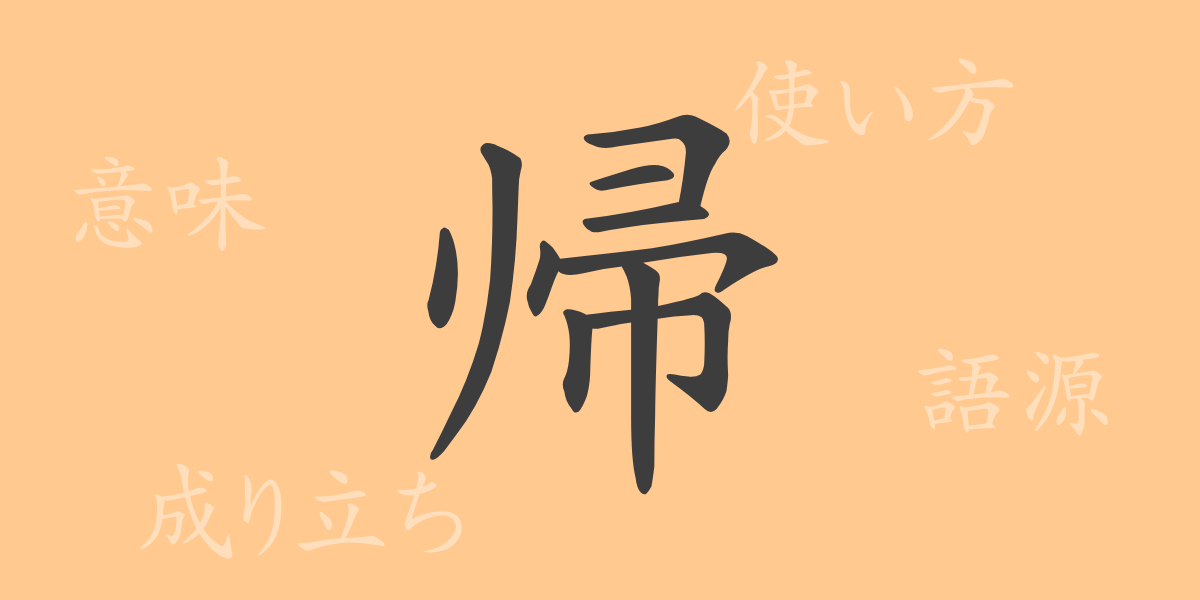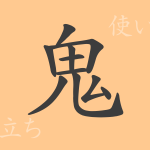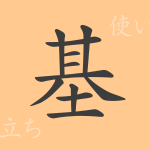The commonly used kanji in Japanese culture, which are deeply rooted in the country’s heritage, each have their own unique history and meaning, and are closely related to the everyday lives of Japanese people. The kanji “帰” (かえり) holds a particularly important place in our daily language, and its frequency of use is high. In this article, we will explore the allure of the kanji “帰” (かえり), starting from its etymology, meaning, usage, pronunciation, and even touching on idioms and phrases that include “帰” (かえり).
The Origins of 帰 (かえり)
The kanji “帰” (かえり) has evolved from ancient Chinese pictographs. Originally, it depicted the concept of returning from war, resembling a person carrying arrows. Over time, it transformed into a more abstract representation and settled into the character “帰” (かえり). This evolution symbolizes the unchanging essence of returning, reflecting the universal concept that no matter where people go, they have a place to return to in the end.
The Meaning and Usage of 帰 (かえり)
The kanji “帰” (かえり) carries the fundamental meanings of “to return,” “to go back,” and “to belong.” This can refer to not only physical movement but also to mental belonging or conclusion. For example, “帰国” (きこく) means to return to one’s country, and “帰結” (きけつ) refers to something culminating in a single result. The expression “帰する” (きする) is used when attributing the cause or responsibility of an event to something.
Readings, Stroke Count, and Radical of 帰 (かえり)
How is “帰” (かえり) read in Japanese, and what is its structure?
- Readings: The on’yomi (Sino-Japanese reading) is “キ” (ki), while the kun’yomi (native Japanese readings) include “かえ.る” (kae.ru), “かえ.す” (kae.su), “おく.る” (oku.ru), “とつ.ぐ” (totsu.gu), and others.
- Stroke Count: The kanji “帰” (かえり) consists of 10 strokes.
- Radical: The radical of “帰” (かえり) is 巾 (はば), meaning “cloth” or “width.”
Idioms, Phrases, and Proverbs Using 帰 (かえり) and Their Meanings
There is an abundance of idioms, phrases, and proverbs in Japanese that include the kanji “帰” (かえり). Here are some examples:
- 帰宅 (きたく): Returning to one’s home.
- 帰省 (きせい): Returning to one’s hometown.
- 帰依 (きえ): A Buddhist term meaning to follow the teachings of Buddha.
- 帰心 (きしん): Redirecting one’s heart to the right path.
- “犬も歩けば棒に当たる” (いぬもあるけばぼうにあたる): A proverb meaning that if you take action, you will encounter both good and bad outcomes. While not directly related to “帰” (かえり), it can be interpreted that every action, such as “returning home,” has its significance, similar to the everyday actions we take.
Conclusion on 帰 (かえり)
The kanji “帰” (かえり) has been deeply ingrained in our lives for over a thousand years. This indispensable character in our daily communication not only evokes the idea of returning home but is also used in various contexts, such as belonging of the heart and the culmination of results. Through this article, your understanding of the rich history and usage of the kanji “帰” (かえり) will have deepened. As part of the rich expressions in the Japanese language, let’s continue to cherish and use “帰” (かえり) carefully.

























